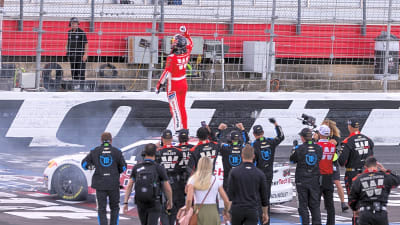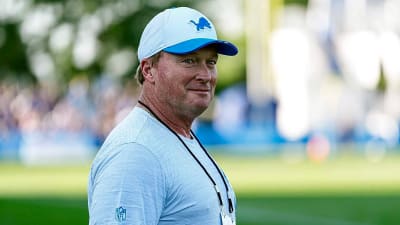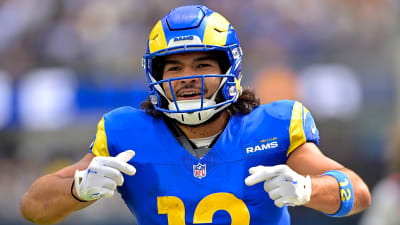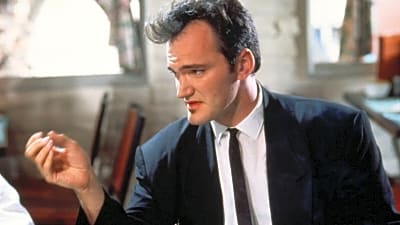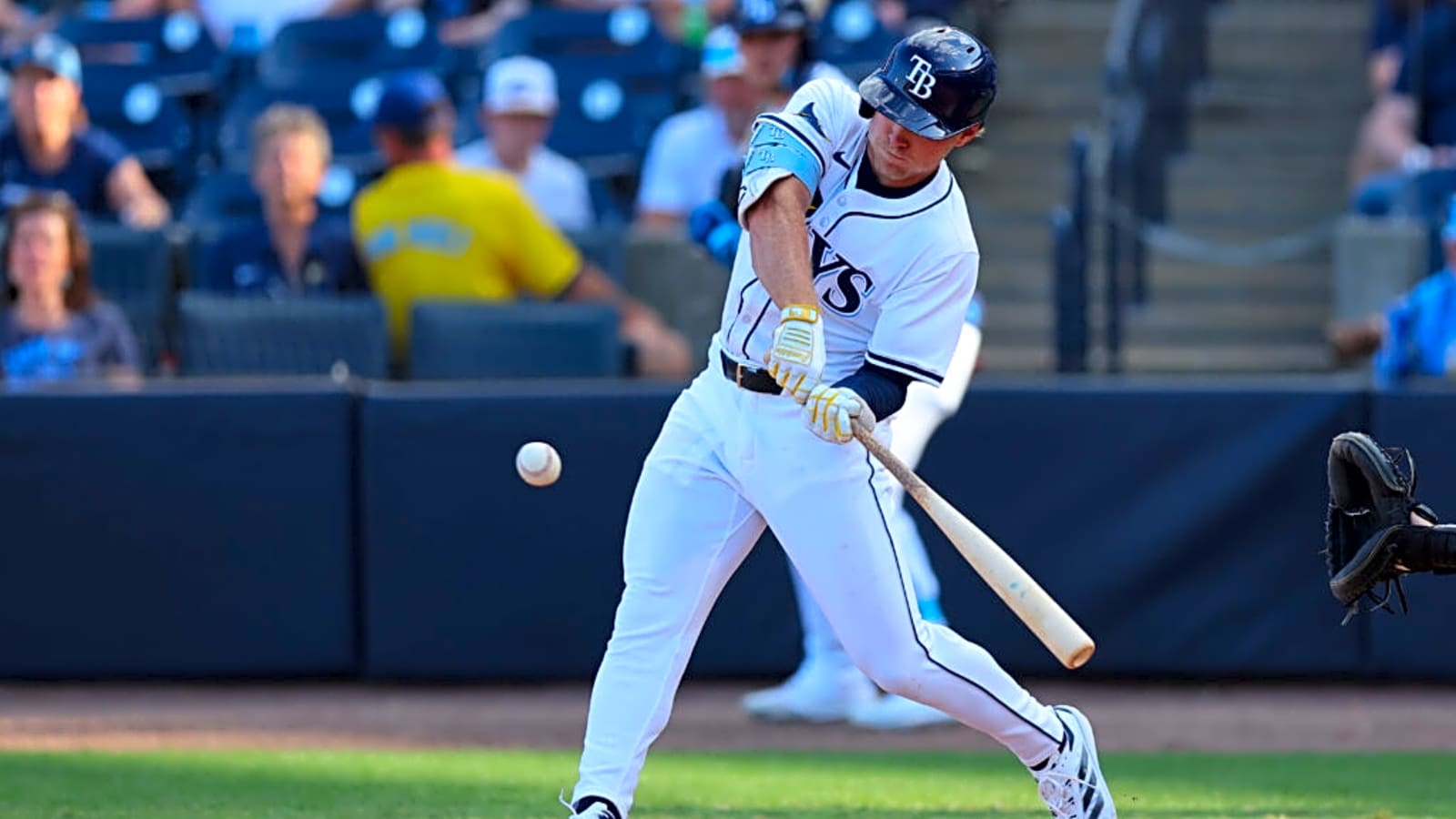
The Tampa Bay Rays had one of the more unusual seasons in recent MLB history, for reasons outside of their on-field performance. Their home games were played at a minor league ballpark while Tropicana Field underwent repairs. The rainy weather forecast for Florida’s Gulf Coast over the summer caused MLB to give the Rays an unusual schedule for traveling purposes.
Despite being as close as two games back of a Wild Card spot on September 4, the Rays finished the year at 77-85. Playing in one of baseball’s most competitive divisions, the AL East, Tampa Bay couldn’t quite keep up with the three teams ahead of them – all of which earned postseason berths.
While the Rays weren’t expected to be a World Series contender this year, it’s surprising that they have finished with a losing record for two consecutive seasons. Known for having a cutting-edge front office that achieves excellent results despite one of the lowest payrolls in the game, the club has been underwhelming recently.
I believed that Tampa Bay would have a good team this season. In January, I incorrectly predicted that the Rays would beat their preseason win total projection of 80.5. Then, in early September, I thought that if any team would shake up the AL Wild Card race, that Tampa Bay had the talent to do so (spoiler alert: it was Cleveland).
The Rays had some very good individual performances, but simply were not strong enough as a team to make the playoffs. In this piece, we’ll take a look back at some key takeaways from a disappointing Rays season.
1. Tampa Bay’s 2025 Season Was as Average as It Gets
Offensively, the Rays were 15th in the majors in runs scored (714), 16th in home runs (182), 19th in on-base percentage (.319), and 13th in slugging percentage (.401). Their team wRC+ was 98, 16th in baseball. For so many of the most important offensive statistics in the game, Tampa Bay graded out in the middle of the pack.
The one thing that the Rays’ offense excelled at was stealing bases. They finished the season first in baseball in steals with 194, 30 more than the runner-up Milwaukee Brewers. Chandler Simpson stole 44 bases in 109 games this season and looks like the most dangerous baserunner in the sport.
From a pitching standpoint, Tampa Bay was better but still not one of baseball’s best. They finished the season 15th in ERA (3.94), ninth in strikeouts (1,416), eighth-best in walks (474), and seventh in home runs allowed (205). Their hard-hit percentage allowed was fourth-worst in baseball, at 42.3%.
Buoyed by a quality season from starting pitcher Drew Rasmussen (2.76 ERA, 2.5 fWAR), the Rays’ pitching staff did a lot of things well but was ultimately stuck in the middle of the pack in run prevention.
Rays president of baseball operations Erik Neander must make improvements this offseason to all aspects of the team to be more competitive next season.
2. The Offensive Depth Wasn’t Exciting
It takes a village to be a World Series-contending baseball team. Sure, the Rays got a brilliant 45 home run, 4.6 fWAR season from 22-year-old Junior Caminero, but that wasn’t enough to make their offense good. They also got very good seasons out of Yandy Díaz (2.9 fWAR) and Jonathan Aranda (more info below), but from one through nine in that lineup, there were usually at least a few below-average hitters.
Five Tampa Bay position players received at least 300 plate appearances and finished as below-average offensive producers, by wRC+. Perhaps the most infamous of the bunch was shortstop Taylor Walls, who received 317 PA but posted a .599 OPS with just four home runs.
Outfielder Josh Lowe also neglected to take a step in the right direction, despite cutting his strikeout rate by almost seven percent. Lowe’s .650 OPS and 79 wRC+ led him to be graded as essentially a replacement-level player, with a -0.1 fWAR.
The rest of the outfield didn’t exactly hold their own, either. Simpson (88 wRC+) batted .295 and made an impact with his speed but hit no round-trippers. Christopher Morel hasn’t yielded any outstanding results as a Ray yet; he struck out 35.7% of the time and was also replacement level, by fWAR (-0.1).
Jake Mangum received 428 plate appearances and was Tampa Bay’s most impactful outfield bat, with a 95 wRC+. Even though he stole 27 bases, typically, teams would prefer that their best offensive producer at that position hit more than three home runs in a season.
The Rays will hope to find some more impactful bats off the scrap heap this offseason and also within their talented minor league system. The front office will bet on big performances from unproven players next season.
3. Shane McClanahan Was Sorely Missed
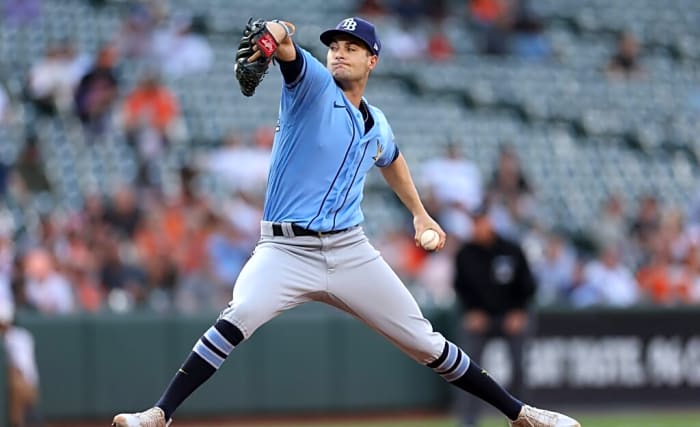
After he underwent Tommy John surgery in August of 2023, the Rays were hoping to get a full season from their staff ace, Shane McClanahan. Ultimately, they didn’t get a single start from him. This development threw a wrench in their rotation plans.
McClanahan was on the bump in spring training games but was not a part of the Opening Day roster due to a triceps issue. Then, after making two rehab starts this summer, the star lefty felt biceps soreness and was shut down again. McClanahan is optimistic that he’ll be good to go at the start of 2026, but his absence set the Rays back this season.
Fortunately for Tampa Bay, Rasmussen outperformed expectations (and his peripherals) to function as a staff ace. Ryan Pepiot (167.2 IP, 3.86 ERA) was a solid mid-rotation starter. Shane Baz (166.2 IP, 4.87 ERA) had his ups and downs. While it was statistically an ugly season for Baz, the Rays were delighted to see him throw more than 80 innings for the first time in his career.
After those three, things got really concerning for the Rays. Zack Littell and Taj Bradley each made 20 starts for Tampa Bay in the first half; however, both were shipped off at the trade deadline. Littell had the lower ERA (3.58), but Bradley had the better fWAR (1.5) with the club. Neither of these two arms was exceptional during his Rays tenure.
Adrian Houser (4.79 ERA), Joe Boyle (4.67 ERA), and Ian Seymour (3.63 ERA) rotated in as the team’s final two starters to end the season. The club hopes that Seymour will be a crafty, back-end rotation starter next season. Boyle was phenomenal in Triple-A (86 IP, 1.88 ERA) but walked too many batters to succeed as a starter in the majors.
If the Rays were able to get 100 innings out of McClanahan in 2025, who knows what this season would have looked like? Perhaps the team would have performed better, kept Littell or Bradley, and had an above-average pitching staff. Hopefully, McClanahan will regain his 2022 form and function as the staff ace next season, despite the extended layoff.
4. Jonathan Aranda Is a Core Piece
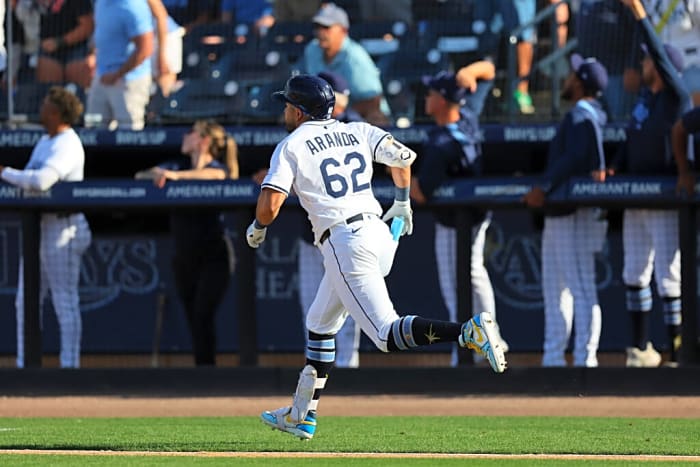
Back in April, I wrote about how Jonathan Aranda was the Rays’ early-season standout. His emergence continued throughout the 2025 campaign, one that was unfortunately limited by a fractured left wrist in late July. He will be a key cog in this Rays lineup going into 2026.
As a primary first baseman and designated hitter, Aranda doesn’t provide much defensive value. He has to earn his keep by being an impactful hitter, which is exactly what he did in 2025. Aranda slashed .316/.393/.489 with 14 home runs, good for an outstanding 146 wRC+.
To put it simply, Aranda pummeled baseballs this season. His 93-mph average exit velocity, 54.5% hard-hit rate, and .529 expected slugging percentage were all in the top six percent of qualified batters. He fared better against right-handed pitching (157 wRC+) than lefties (111 wRC+), but was an above-average hitter regardless of the opposition’s handedness.
Neander and manager Kevin Cash have no choice but to pencil this guy into the middle of their lineup in 2026.
5. The Rays Added Relievers Despite Selling at Other Positions
The Rays are acquiring RHP Griffin Jax from the Twins, per @JeffPassan.
— Just Baseball (@JustBB_Media) July 31, 2025
Tampa Bay gets two pitchers late on deadline day! pic.twitter.com/4WIstvl3nL
Neander may have decided to sell off Littell, Bradley, infielder Jose Caballero, and catcher Danny Jansen, but he did add controllable pieces to his bullpen in doing so.
The biggest prize of the Rays’ deadline was reliever Griffin Jax, whom they received from the Minnesota Twins in return for Bradley. Jax was lights-out in 2024 and still was very effective despite some regression this past season. Posting 99 strikeouts in 66 innings is enough to get any team excited, regardless of a shaky 4.23 ERA.
Tampa Bay surely figured that Jax would be a big part of next season’s bullpen, while also being less volatile than Bradley. He is controlled through the 2027 season and is a relief arm that any team would covet. Bradley flashed high-end upside, potentially as a reliever, but it wasn’t clicking for him in the rotation this year. So, the Rays must have decided to sell while he still had some top prospect pedigree to his name.
Jax is also a pitcher who many speculate would be a great candidate to transition back to the starting rotation, given his excellent strikeout rate (35%) and solid walk rate (7.4%). If the Rays choose not to mess with a good thing and keep Jax as a reliever, he is a great option in high-leverage situations.
Weeks before the trade deadline, the Rays also acquired relief pitcher Bryan Baker from the Baltimore Orioles for a 2025 Competitive Balance Round A draft pick. He’s less of a sure thing than Jax, but was in the midst of an excellent season upon being moved.
Baker may have put up a 4.75 ERA during his time in Tampa Bay, but overall, his production was solid. His 30.3% strikeout rate and 6.2% walk rate were both great marks for a reliever.
Baker has been snakebit by hard contact throughout his career, but perhaps the Rays will improve his fastball shape and turn him into an effective leverage arm down the road. He is controlled through the 2028 season.
6. The Rays Will Rely Heavily on Youth in 2026
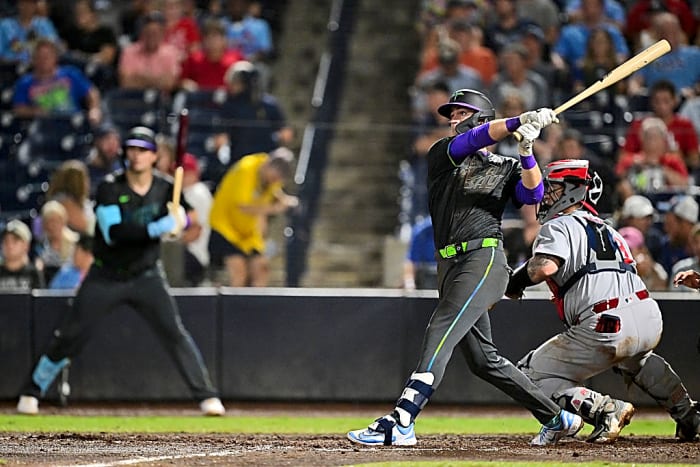
Toward the end of the season, the Rays had no choice but to start to use some of their young talent to fill holes on their roster. In September, Neander could call up prospects without exhausting their rookie status, so Tampa Bay deployed some new faces.
Most notably, the Rays called up their top prospect, shortstop Carson Williams, to receive 106 plate appearances at the end of the season. Known to be a stellar defender with good power and speed, Williams could be the team’s Opening Day shortstop next season. His 41.5% strikeout rate was ugly, but the 22-year-old has above-average bat speed. If he could develop an improved ability to hit for contact, Williams could be a true five-tool player.
Tampa Bay also has a slew of prospects who play first base, all of whom will be closing in on the major league roster in 2026. We got a look at Bob Seymour late in the season, who hit 30 home runs in Triple-A this past year but posted a 48 wRC+ in 26 major league games. Tre’ Morgan and Xavier Isaac both had solid campaigns in the upper levels of the minors in 2025 and will push to be a part of the team in 2026.
If veterans Yandy Díaz or Brandon Lowe get moved at some point this offseason or in 2026, that could clear room for Morgan or Isaac to reach the major leagues. Neander could be on the prowl in trade talks for a young, startable major league outfielder in exchange for one of these first basemen, as well.
The core of a good, winning team is present in Tampa Bay, but the front needs to find more valuable players to round out the roster for next season. The team’s depth this season didn’t cut it in the cutthroat AL East.
More must-reads:
- MLB playoff takeaways: This could be Aaron Boone's last chance
- Brewers provide uncertain injury update on Jackson Chourio
- The 'MLB playoff debut strikeouts leaders' quiz
Breaking News
Trending News
Customize Your Newsletter
 +
+
Get the latest news and rumors, customized to your favorite sports and teams. Emailed daily. Always free!
